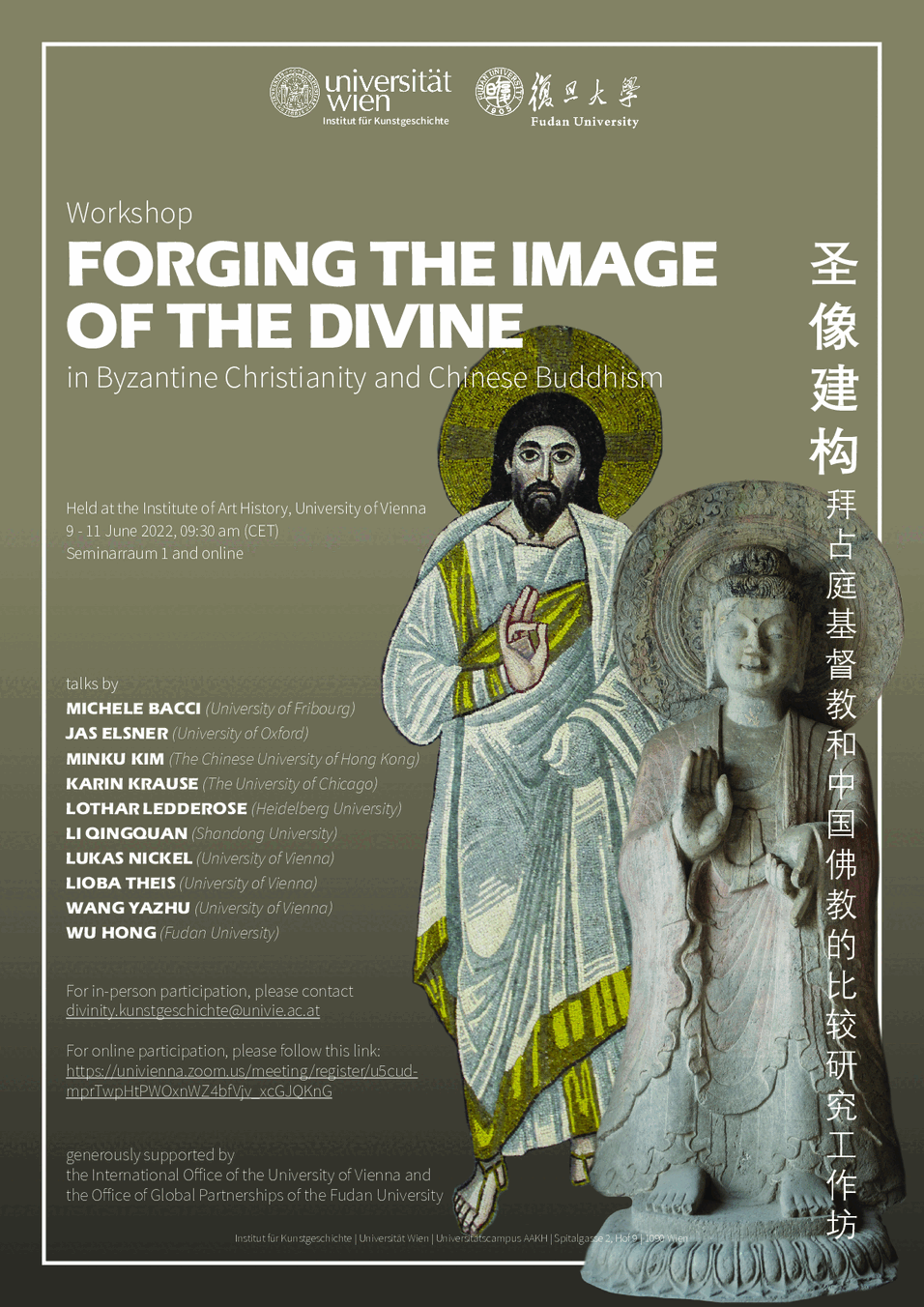Forging the Image of the Divine in Byzantine Christianity and Chinese Buddhism
The workshop will compare the practices of visualising the divine in two major
world religions within two particular regional contexts: Christianity in Byzantium and
Buddhism in China. Both religions were particularly successful in employing visual agents in conveying their messages; both succeeded in establishing their imagery amongst pre-existing pictorial traditions in the local context. In both cases, the pre-existing visual traditions did not generally sanction the depiction of the supreme beings. The workshop will investigate the strategies adopted towards the visualisation of the divine, and inquire into their utilisation of, as well as differentiation from established practices. It will trace the stages leading to the establishment of a pictorial convention in the visual presentation of the religions.
In line with the Jewish tradition, early Christianity in Byzantium strictly forbade the idea of depicting the divine. The immateriality of the divine was perceived as contradicting its visualization. In this way, Christians distanced themselves from the Greco-Roman practise that freely visualised its deities. The theological debate surrounding this question took place primarily during the Byzantine iconoclastic controversy (726-843). A major outcome was the regulation of how the divine can be revealed in the materiality of an image. Nevertheless, the subject remained problematic until the end of the Byzantine Empire (1453), as can be seen from the different image solutions over time.
When Buddhism entered China during the 2nd century CE, it brought a large set of iconographic tools developed in India and Central Asia into an equally rich and established visual world. Buddhism, however, employed images in a particular manner that was unknown locally so-far, namely by depicting its main divinity in an iconic mode facing the viewer, and by presenting it in a strictly hierarchical setting. The almost spontaneous incorporation of Buddhist iconographical elements into non-Buddhist contexts confirms the outstanding efficacy of the visual means employed in early Buddhist sites in China. Especially the iconic mode of presenting the divine proved powerful as other religions incorporated those into their own imagery, as observed from the 5th century CE onwards.
The workshop will inquire the negotiation of pictorial strategies in relation to locally established image systems. The following questions will be pursued:
How did the visualisation of the divine come about?
How did the problem of human inability to visualise the divine affect image making?
How did the images of the divine relate the existing traditions?
What changes in the representation of the divine can be observed over time, and what considerations do they reflect?

